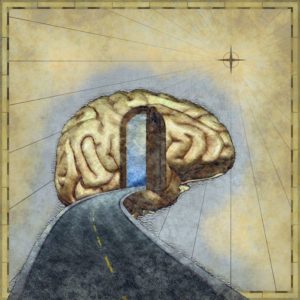By Dr. Ken Broda Bahm:

Our trial system is based on the ideal of a neutral fact-finder. And as much as the social science tells us that this blank slate does not actually exist, it remains true that jurors will try very hard to keep an open mind. No, they won’t be able to, as the voir dire language so often puts it, “set aside” their knowledge, attitudes, and significant experiences. But they will want to believe they’re giving both sides a fair shake, particularly at the beginning. Legal persuaders should remember, however, that this phase of aspirational open-mindedness does not last forever and likely won’t make it until the end of trial.
New research covered in a ScienceDaily release explains why. Researchers from University College in London (Gesiarz, Cahill, & Sharot, 2019) found that people will limit their evidence gathering once the data supports their desired conclusion. In other words, we tend to act open-minded only up until the point at which the evidence is trending in our preferred direction, and then we lock into a conclusion. This has some important implications for persuaders, particularly those operating in the time-limited context of a trial. A human with views and experiences is never going to be truly “neutral.” At the same time, that predecisional state, the point before they lock-in on their view, is a precious resource and something that should never be taken for granted. In this post, I will take a look at the research as well as some of the implications of the finding that open-mindedness is finite and temporary.
The Research
In the research study, 84 people played an online categorization game. They had the incentive to correctly identify a category based on a pattern of responses, however one result led to bonus points and the other result did not. In that situation, the researchers found the preferred answer required less evidence. Exhibiting a degree of wishful thinking, participants would become more certain when some evidence pointed to the conclusion they wanted, but would continue to search for more evidence when the weight of evidence pointed away from that conclusion.
This finding is consistent with research in more real-world settings. For example, medical patients are more likely to seek out a second opinion when receiving bad news rather than good news. According to lead author, Filip Gesiarz, “Our research suggests that people start with an assumption that their favored conclusion is more likely true and weigh each piece of evidence supporting it more than evidence opposing it. Because of that, people will find no need to gather additional information that could have revealed their conclusion to be false. They will stop the investigation as soon as the jury tilts in their favor.”
For actual jurors, this suggests that their motivation will vary depending on how the evidence is coming in. If it is leaning away from their preferred conclusion, they’ll think, “Let’s keep investigating,” but when it starts to support that preference, they’ll have a feeling of, “Our work is done.” This suggests a mechanism that could explain how jurors can think of themselves as open-minded, while at the same time still being guided by their motivations. They will have a bias and will, more or less, try to set that aside while receiving and processing the evidence. Once they start to see support for that pre-existing leaning, however, they’ll think “I knew it,” and begin to dig in on that conclusion.
The Implication
The main takeaway is this: Don’t believe the legal fiction that jurors stay neutral as they hear evidence, and only start to reach conclusions once they’re given the instruction to deliberate. Experienced legal persuaders, of course, are likely to doubt that already. But the research is a reminder that time is of the essence. If jurors have a motivation that could favor the other side, they might reach a conclusion just as soon as the evidence starts to lean that way.
So courtroom persuaders ought to be nervous about waiting. That is why we encourage you to put you strongest appeal, your “silver bullet,” in your first few minutes with the jury. Front-loading your strongest points, right out of the blocks, is the way to make the best use of those precious moments when jurors are likely to be both interested and (relatively) open-minded. The time frame also provides a good reason to think of your witness order and put the “primacy effect” into practice by including strong witnesses early in the case, and strong cross-examinations early in their case. Sometimes there can be a reason to hold off on sharing a fact (to regain attention, leverage surprise, and provide a “But wait, there’s more” appeal). But use that option with care. If you have reasons to suspect that your early information may not be strong enough, then forget about the surprise. Ultimately, given that jurors’ minds are most open early in a case, you want to get your points in before they close up.
In addition to providing an explanation for the ways people can feel open-minded while still being guided by their motivations, the research also explains how people maintain false beliefs. “Today, a limitless amount of information is available at the click of a mouse,” researcher Tali Sharot commented. “However, because people are likely to conduct less through searches when the first few hits provide desirable information, this wealth of data will not necessarily translate to more accurate beliefs.” The bottom line is that we aren’t blank slates, or at least not for long.
______
Other Posts on Persuasion:
- Respect the Four Pillars of Persuasion
- See Persuasion as a Process (Toward a Unified Theory of Legal Persuasion)
- Use the ‘Persuasion Slide’
Gesiarz, F., Cahill, D., & Sharot, T. (2019). Evidence accumulation is biased by motivation: A computational account. PLOS Computational Biology, 2019; 15 (6): e1007089 DOI: 10.1371/journal.pcbi.1007089